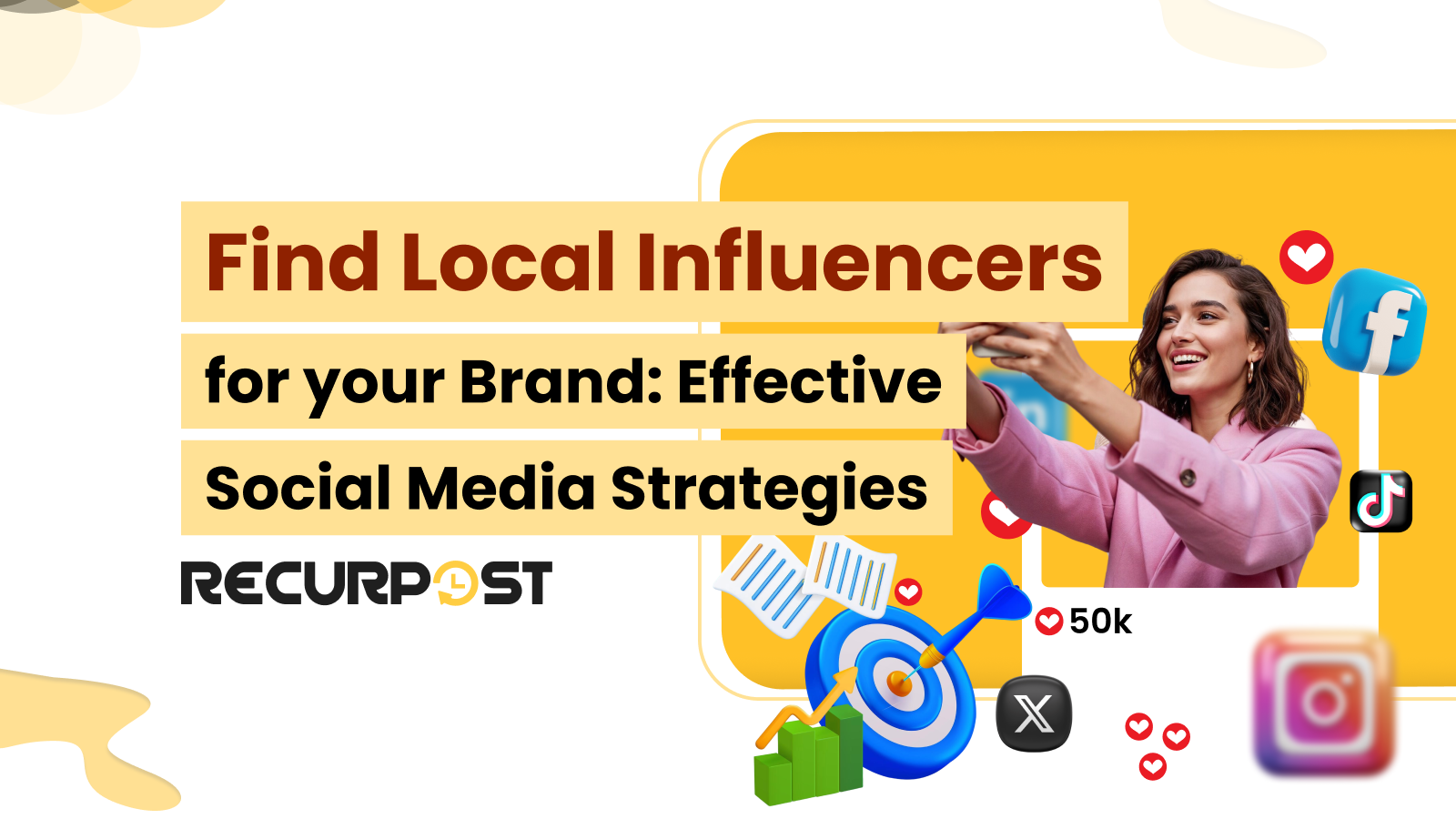Want to find local influencers in your city or region? Start with creators posting about local events, trending spots, and topics your target audience talks about. Use an influencer search tool or try searching Instagram influencers by location to spot profiles tied to your area.
Local social media influencers connect with the community by attending local events, tagging small businesses, and sharing local hashtags. Their content feels close to home, making it easy to build community engagement and gain loyal social media followers from specific geographic regions.
Real estate marketers and agencies benefit from local influencer partnerships because influencers understand the target demographic and audience demographics in their specific locations. Influencer marketing campaigns with the right local influencers reach the right local community and get higher engagement rates.
In this step-by-step guide to finding local influencers, you’ll learn:
- How local influencer marketing connects brands to specific regions and target locations.
- Why micro influencers and nano influencers often have a stronger impact than celebrity influencers in building authentic relationships.
- Ways real estate agencies and small businesses work with relevant influencers for better engagement and discovery of the influencer community.
- How to start your influencer search, choose the right social media platforms, and discover influencers who match your brand and target location.
You’ll get a complete playbook on finding, connecting, and building long-term relationships with local influencers, including free ways to find local influencers, audience demographics, fake followers, and more.
1. Define Your Target Audience and Location
To find local influencers who fit your brand, start by naming your target audience and selecting your specific location. Defining audience demographics and your target location is the first step in any influencer search.
Most brands find local influencers using three main paths: search social media platforms for local hashtags and geotags, use an influencer search tool that sorts by location or audience demographics, and review attendees at local events or those tagged in community content.
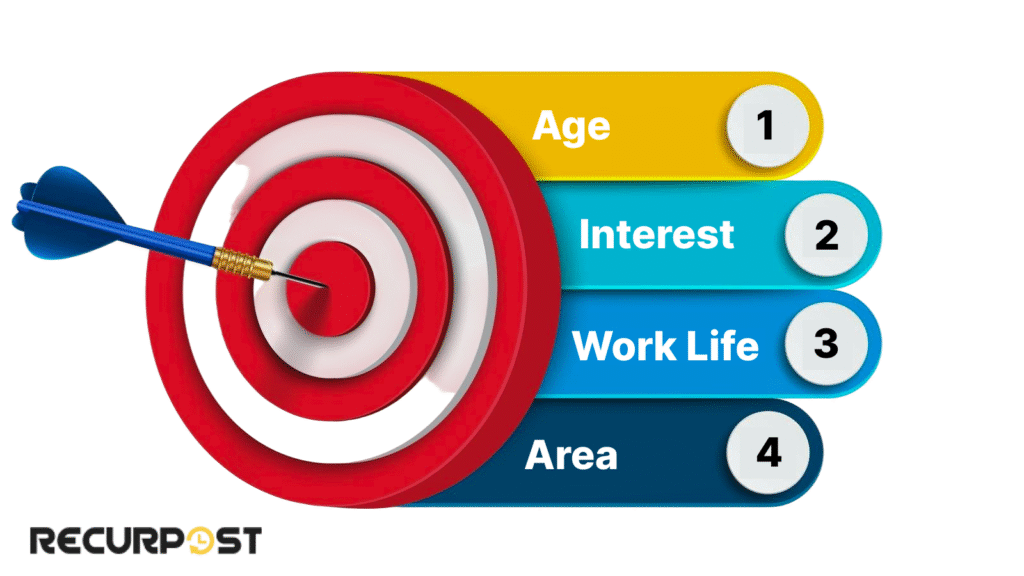
Know Your Audience:
Define your target demographic by age, interests, and lifestyle to find local influencers. Teens, millennials, and Gen X use social media in unique ways.
Interests matter: fitness influencers, real estate marketers, parenting creators, and food or tech influencers all attract different groups. Based on that, it becomes easy to find local influencers.
Work life also counts: remote workers, small business owners, and first-time homebuyers each follow local Instagram influencers in their area.
Match these traits to find local influencers with real social media followers who reflect your target audience.
Use Insights from Social Media Platforms:
Social media platforms like Instagram, Facebook, TikTok, and LinkedIn share audience data: check follower count, engagement rates, and most active cities or neighborhoods.
Watch for engagement patterns: who likes, shares, or comments most in your target location? These answers make it easy to find local influencers.
These insights reveal audience demographics and engagement rates, and show you where your social media followers are active.
Pick Your Target Area:
Pick specific geographic regions: real estate marketers often track zip codes to find local influencers, while agencies might focus on neighborhoods, business districts, or multiple locations for campaigns.
Use Local Hashtags for Discovery:
Add location-based hashtags to your content relevant to your business niche to find local influencers. This sharpens your influencer search and helps you discover influencers who connect locally. Examples:
- #MiamiRealEstate: real estate marketers and agents in Miami
- #DallasMomLife: parenting influencers in Dallas
- #ChicagoStartups: tech influencers and founders in Chicago
- #LAStyle: fashion influencers in Los Angeles
When you review profiles, focus on authentic engagement rates and local profiles. Ignore fake followers and look for influencers with a genuine local community. Don’t just count followers, look for real conversations and active local profiles.
2. How to Search for Local Influencers on Social Media
Most local influencers post on the same social media platforms your audience uses. These creators connect with local community members, building trust and real engagement with your brand story. Social media is the best starting point for any local influencer search.
Influencer Tire:
- Nano influencers: 1,000–10,000 followers
- Micro influencers: 10,000–50,000 followers
- Mid-tier influencers: 50,000–500,000 followers
- Macro influencers: 500,000–1 million followers
- Mega influencers: Over 1 million followers
Local influencers bring value to brands by speaking directly to people in specific regions or target locations. Their local posts create engagement and drive influencer partnerships that matter in each community.
How to Find Local Influencers for Free on Every Platform
Find Local Influencers on Instagram
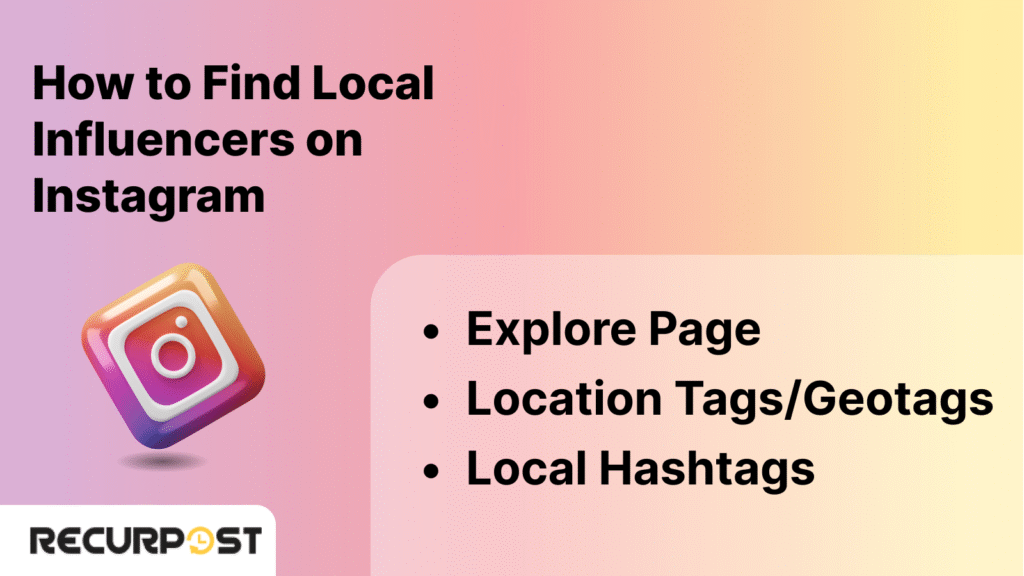
Instagram makes local influencer discovery easy for marketers who use geographic influencer research and targeted discovery methods. Instagram local influencer location tools like the Explore page, location tags, and local hashtags help brands find creators posting from specific neighborhoods, city venues, or their niche community.
Check profiles that show consistent community engagement, such as likes, comments, and shares on local content, to reveal which influencers connect with your target area. Using these Instagram discovery features helps marketers identify genuine local voices and build connections that matter.
- Use influencer search tools or search with local hashtags like #CityNameBlogger or #CityNameEats
- Tap location tags and geotags on popular venues
- Check who gets real comments, not just likes
Find Local Influencers on TikTok

TikTok displays content based on your location and viewing habits. Interacting with city-specific content increases similar recommendations, making local influencer identification easier.
- Engage with content based on your city, neighborhood, or interest (e.g., #LocalFoodie)
- Look for consistent posts about community events or local trends
- Review engagement: watch views, shares, and comment quality
Find Local Influencers on Twitter/X & Facebook
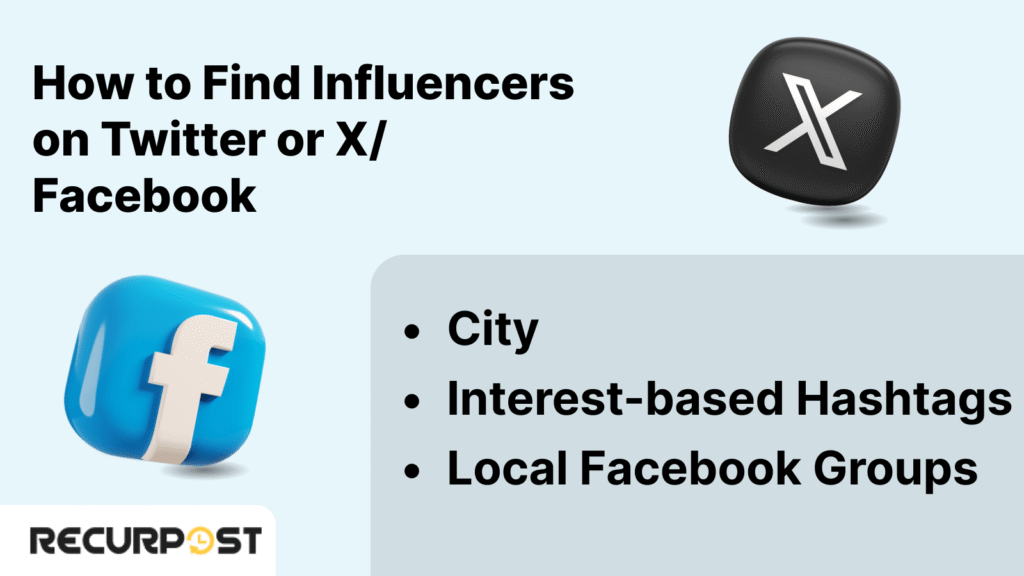
Twitter/X and Facebook offer text-based search options. Combine city names with interest-based hashtags. Facebook groups serve as promotion hubs where creators share local content.
- Combine city names with interest-based hashtags, e.g., #NYCTech or #DallasMoms
- Join Facebook groups for community events, local businesses, or lifestyle tips
- Watch for regular posts and authentic interaction
Find Local Influencers on LinkedIn
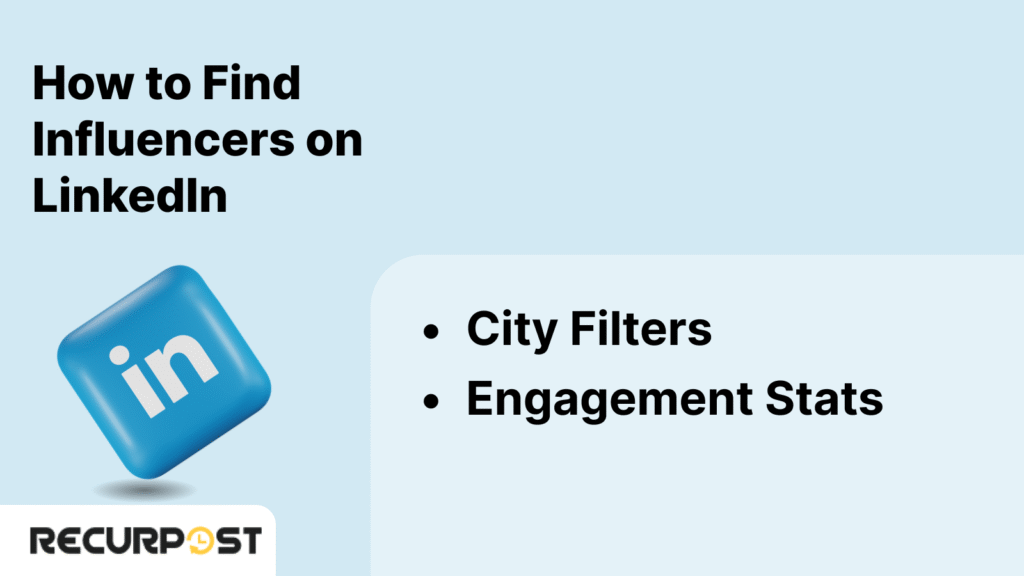
LinkedIn serves professional niches where consultants, marketers, small businesses, and influencers can be found using city filters and engagement statistics.
- Filter by city and job title to spot business influencers in your target location
- Join local industry groups
- Seek out creators who post often and drive real conversations
Find Local Influencers on YouTube
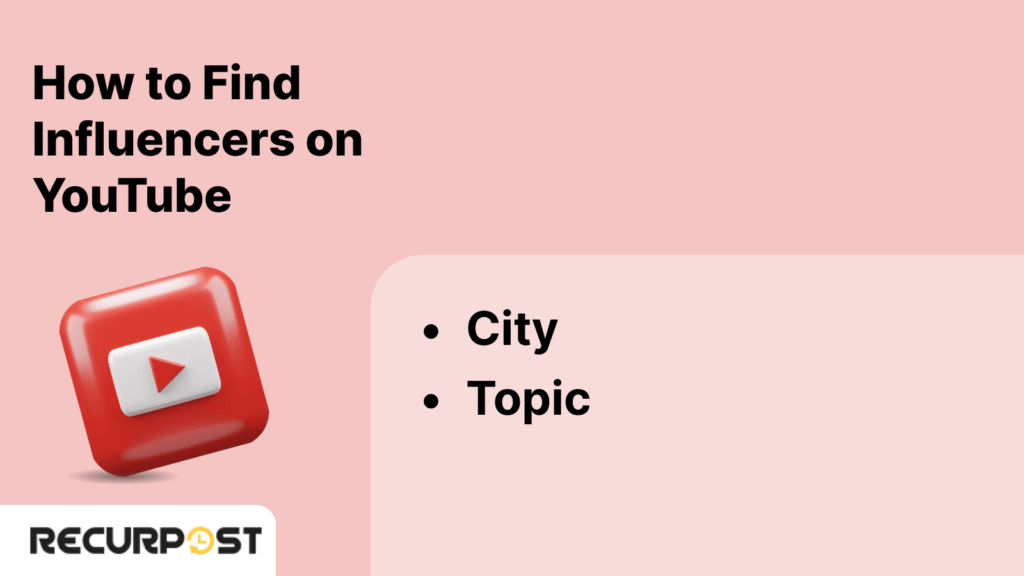
YouTube has powerful search features that enable geographic targeting for local creator discovery. YouTube influencer location works when marketers search by city and topic to find creators who talk about local food, tech, housing, or tourism, then filter results by upload frequency and subscriber engagement within specific metropolitan areas.
- Search by city and topic (e.g., “Seattle food vlogger,” “Dallas tech reviews”)
- Filter by upload frequency and engagement rates
- Focus on creators who feature local places or businesses
Find Local Influencers on Snapchat
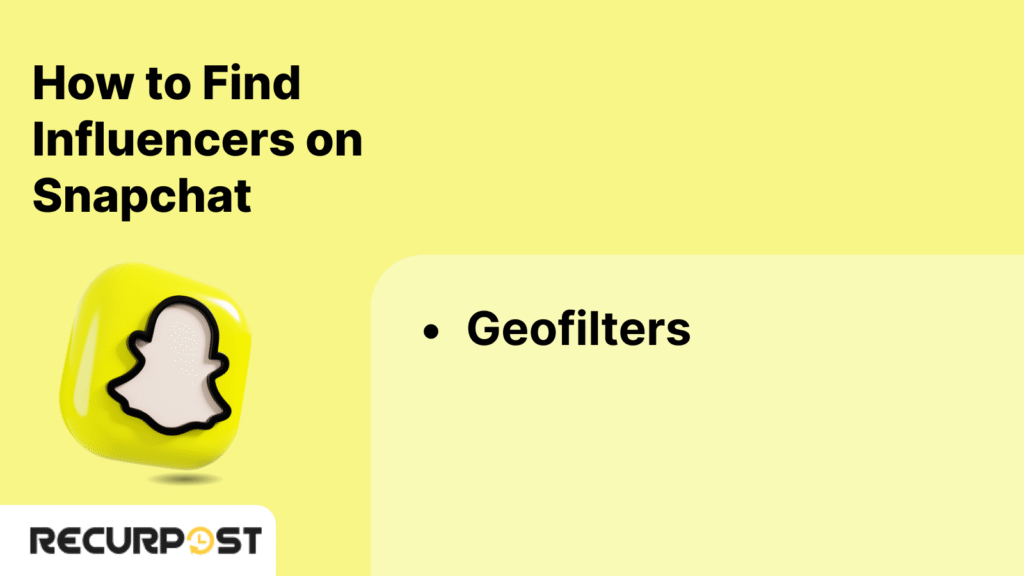
Snapchat uses geofilters that let you see who’s posting content with local overlays. These filters often appear during events or from known locations like malls, gyms, and stadiums.
- Use geofilters to find posts from specific venues or events
- Watch for accounts posting often from your target area
Find Local Influencers on Pinterest
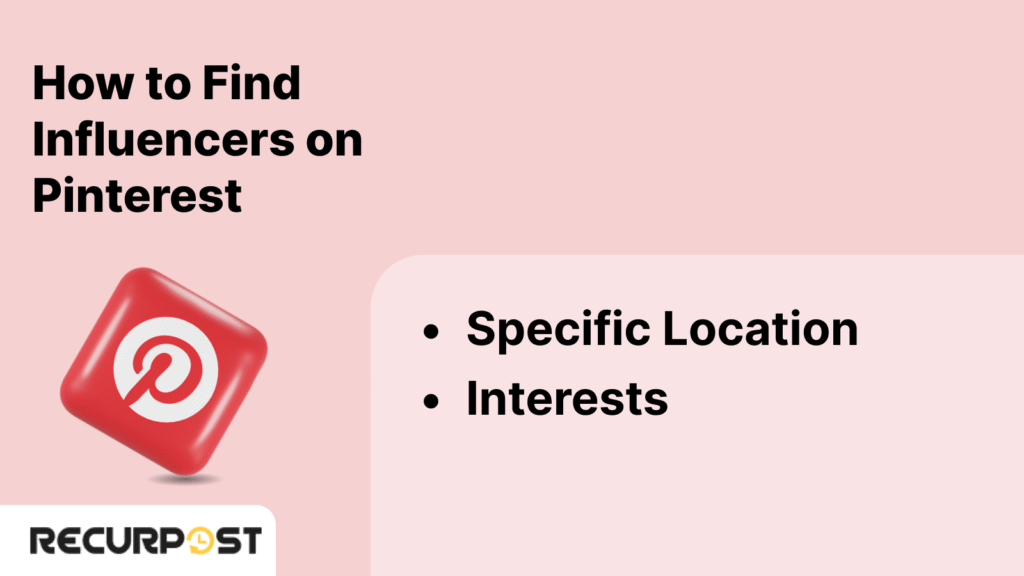
Pinterest is ideal for lifestyle, DIY, or home-based content. Influencers here build boards around specific locations and interests.
- Search for pins using city-based keywords like “Chicago home ideas”
- Look for users with boards focused on your niche and city
On every platform, engagement rates and real local interaction matter more than a high follower count. When you review local profiles, check for comments, shares, and content tied to local community events.
3. Use Influencer Databases and Search Tools
Go beyond hashtags and find local influencers for your brand using top influencer marketing platforms and dedicated search tools. These solutions help agencies and small businesses discover influencers by location, audience demographics, and campaign goals.
Influencer Marketing Platforms:
Upfluence and Grin connect many brands with local influencers by letting you filter by city, target demographic, audience size, engagement rates, and content niche. These tools work for agencies and digital marketing teams that manage campaigns across multiple locations or for different brands to find local influencers.
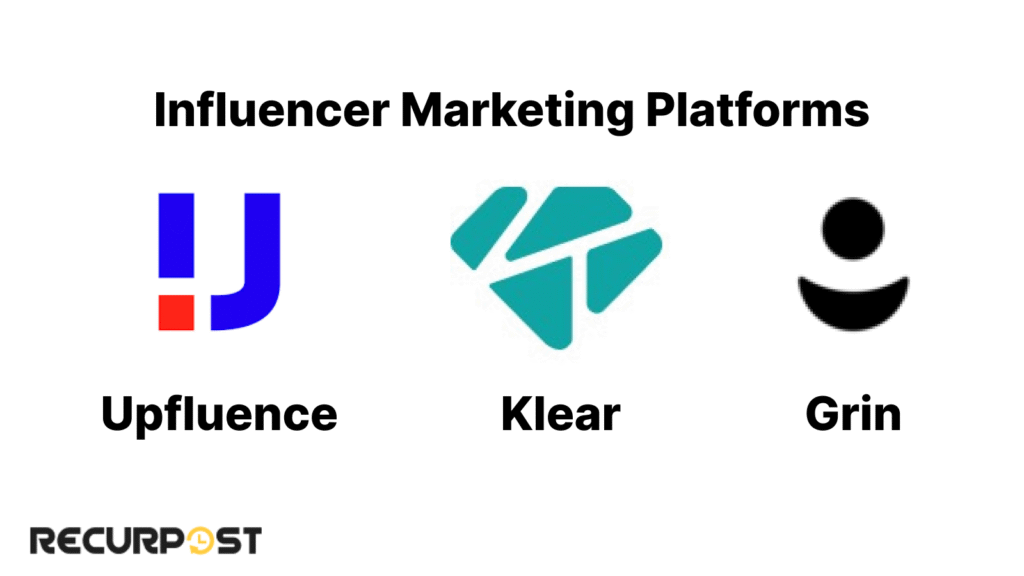
How Influencer Search Tools Help:
- Find local influencers by searching for target location, interests, audience demographics, and engagement.
- Filter out fake followers and spot quality profiles with authentic engagement.
- Compare local influencer profiles side by side: review follower count, content style, and performance metrics.
- Choose Instagram influencers, TikTok creators, nano influencers, or micro influencers based on your campaign goals.
- Save hours by avoiding manual searches across every platform while you find local influencers.
Agency Benefits:
- Influencer marketing platforms keep outreach organized, track relationships, and let you measure results.
- These platforms help agencies create and manage influencer partnerships with clear performance tracking.
Influencer Strategy Template
Need a campaign starting point? Download our free influencer strategy template.

RecurPost for Managing Influencer Campaigns
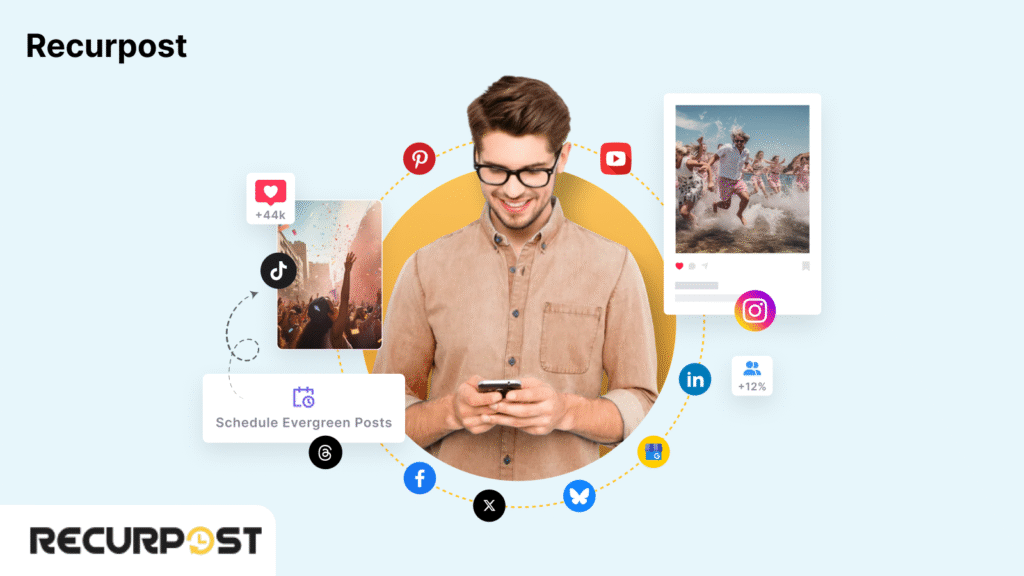
Once you’ve built a list of relevant influencers, you’ll need a way to keep your content schedule tight. RecurPost makes this easy.
Recurpost helps to:
- Use RecurPost to schedule posts for each local influencer.
- Set up long-term influencer partnerships and campaigns that run for weeks or months.
- Track engagement, monitor social proof, and use content recycling to keep campaigns active.
- Manage comments and messages in one inbox.
- See all campaign performance data in one dashboard.
Using the right influencer marketing platform makes managing campaigns in multiple locations simple and keeps everything measurable.
4. Evaluate Influencers: Are They Right for Your Brand?
Before starting a partnership, make sure each local influencer matches your brand and audience. Not every profile with a lot of followers is a good fit. Hence, you have to find local influencers who are suitable for your brand image.
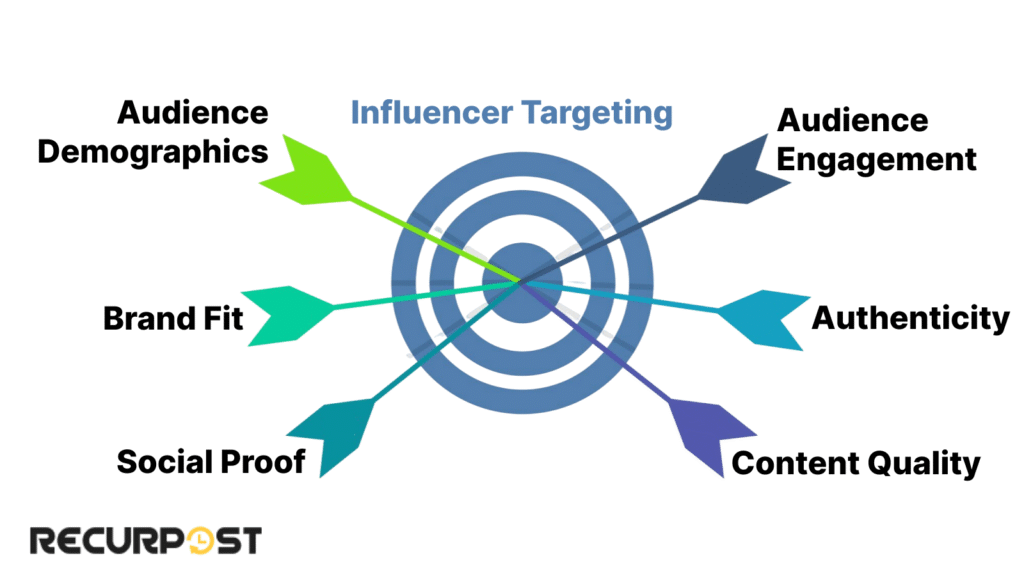
Audience Demographics & Engagement:
- Use influencer search tools or influencer marketing platforms to check audience demographics and engagement rates.
- The best local influencers match your target location and demographic. If you need Portland reach, Houston creators won’t work.
- High engagement rates matter more than big follower counts. Look for likes, comments, and shares from real people, not bots or fake followers.
Authenticity & Brand Fit:
- Choose Instagram influencers and TikTok influencers who tell stories about local events, tag local businesses, and use location-based hashtags.
- Avoid accounts that buy likes or fake engagement. Their audience doesn’t help your brand.
- The right local influencer uses a tone, values, and style that match your brand’s message.
Content Quality & Social Proof:
- Check content quality: do their posts fit your niche? Are captions and visuals clear and engaging?
- Social proof counts: are real people tagging friends, leaving genuine comments, or sharing posts?
- Influencer profiles with reposts from other influencers or local brands have more community credibility.
The best nano influencers, micro influencers, and macro influencers earn trust with clear, consistent, and local content. Trust leads to results in any influencer marketing campaign.
5. How to Reach and Build Partnerships with Local Influencers
After you find the right local influencers, reaching out is your next step. Your first message shapes the partnership.
Craft a Personal Pitch:
Avoid copy-paste DMs. Mention local events, shared hashtags, or a post that shows real community engagement. Say how their content and voice fit your brand and target audience. Go beyond follower count. Talk about values, style, or connections to your local community. Personal pitches get better responses on Instagram, TikTok, and other social media platforms.
Best practices for pitches:
- Keep your first outreach short, friendly, and local.
- Reference mutual interests or community events.
- Don’t start with money; lead with shared value and brand fit.
- Mention the possibility of ongoing influencer partnerships, not just a single campaign.
- Be open about expectations and compensation (some want free products, others want fees).
Some influencers are open to free products, others expect a fee. Either way, be upfront and respectful.
Influencer Contract Template
Want clear terms? Download our free social media influencer contract to set expectations from day one.
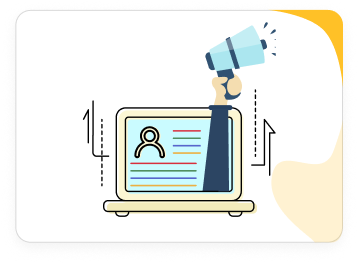
Offer Value and Build Real Relationships:
- Influencer campaigns work best when you treat influencers as partners, not just a quick shoutout.
- Long-term partnerships with local influencers feel more genuine to their audience.
- Local influencer marketing agencies should choose influencers who care about the community and local businesses.
- Brands that value authentic relationships and community engagement earn more loyalty from local influencers and their followers.
Building strong partnerships leads to better results for both sides after you find local influencers.
6. Run Successful Influencer Marketing Campaigns
Once you build influencer partnerships, running a successful campaign means tracking the right performance metrics and giving your brand more community exposure.
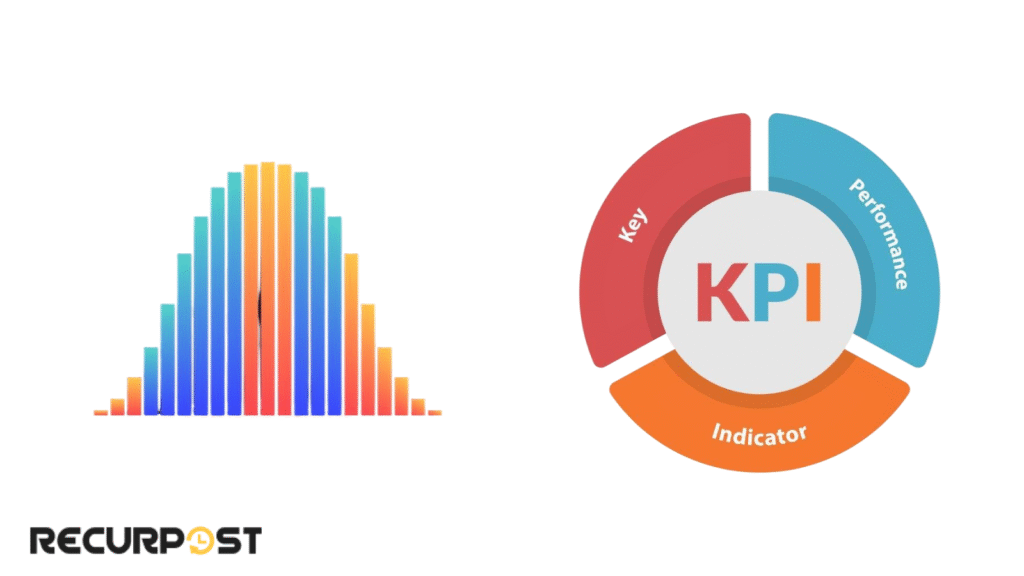
Set Campaign KPIs and Track Results:
Select appropriate campaign metrics. Brands may prioritize reach expansion or local audience trust-building over immediate sales.
- Pick clear goals: do you want more reach, more engagement, or deeper trust with your local audience?
- Key metrics to track include engagement rates (likes, comments, saves), follower count growth, and sales or promo code redemptions.
- Long-term brand ambassador partnerships with local influencers keep your business in the community conversation and build stronger trust than single posts.
- Ongoing visibility and repeated mentions create more awareness and drive action.
Evaluate short-term campaigns against longer-term brand ambassador relationships. Local influencer marketing benefits from ongoing visibility rather than single mentions. Repeated exposure builds audience trust and integrates your business into community conversations.
Real-World Examples of Local Influencer Campaigns
Real brands are already showing how local influencer marketing can drive real results and can be a game-changer.
Real Estate Agency:
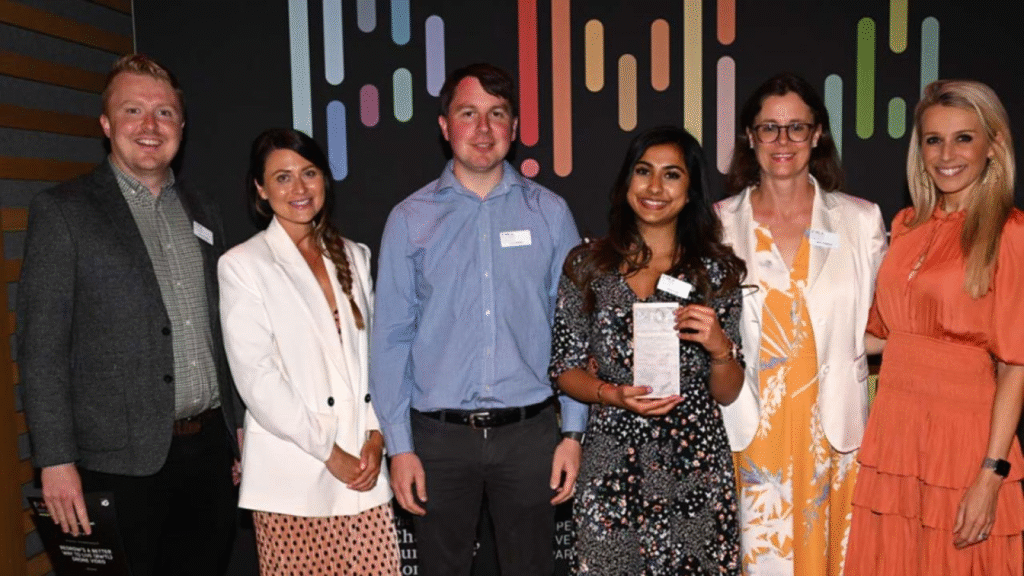
Redrow Homes ran its “Recreate Redrow” campaign in 2023, working with content creator Clare Siobhan. They skipped ads and used influencer-led content inside games like Minecraft and The Sims to connect with younger buyers.
Result: Over 300,000 TikTok views and nearly 8,000 website sessions. This shows how to find local influencers who can deliver results and boost brand awareness in real estate.
Digital Service Provider:

HubSpot’s INBOUND 2023 conference was promoted through influencer marketing. They teamed up with creators already followed by their target audience, leading to higher event awareness and registrations. Digital services can feel local and personal when they find influencers with the right voice and strong engagement.
Track your influencer marketing campaigns, analyze the results, and refine your approach to grow reach, trust, and real returns in your community. (These processes are important after you find local influencers.)
Final Thought
Finding local influencers who deliver real results depends on one thing: community trust. The best local influencers live in your target location, share genuine stories, and connect with your audience on every social media platform.
Look for strong engagement, regular tags, and active conversations tied to local events and places. These signs mean you’ve found influencers who move the needle for your brand.
RecurPost helps manage every part of your influencer marketing, track engagement rates, schedule ongoing posts, and build campaigns with Instagram influencers, TikTok influencers, and more, all from one dashboard.
How do you find local influencers for your marketing strategy?
FAQs on Finding Local Influencers
1. How do I spot fake followers on a local influencer’s profile?
Check for a big follower count but low engagement rates, few real comments, lots of generic emojis, or “Nice!” replies. Sudden jumps in followers can mean fake profiles. Use influencer search tools like HypeAuditor or Modash to analyze audience quality, spot fake followers, and track suspicious activity on local influencer profiles.
2. Should I ask for influencer media kits before working with them?
Yes, always ask for a media kit. Media kits show you audience data, audience breakdown, sample content, engagement rates, and past collaborations. You can compare influencers by checking their style, content quality, niche, and even see their performance metrics. Reviewing a media kit helps you find the best fit for your campaign and avoid working with influencers who lack real engagement or authentic relationships.
3. Can I work with multiple local influencers in different cities at once?
You can, but manage it like separate campaigns. Each city requires tailored content, hashtags, and timelines. If you’re a multi-location brand or agency, use scheduling tools that support content planning across regions.
4. How do I handle contracts and payments with local influencers?
Always use written agreements. Cover deliverables, post dates, usage rights, and payment terms. Include clauses for deadlines and revisions. Platforms like RecurPost can help organize schedules, but legal templates or influencer marketing platforms can help with contracts.
5. What if a local influencer wants creative freedom that doesn’t match our brand?
Set clear boundaries in your pitch. You can give influencers room to be themselves while still protecting your brand voice. Share examples of what fits and what doesn’t. If it still feels off, they’re probably not the right match.
6. How do I find influencers in my area?
Search local hashtags and geotags on social media platforms like Instagram, Facebook, and TikTok. Use influencer search tools and filter by city or neighborhood. Check who is posting about local events and getting strong engagement from people in your area.
7. How do I find local influencers for my brand?
Start by defining your target audience and location. Use influencer marketing platforms or agency tools to search for local influencers by niche, follower count, and engagement rates. Look for profiles already talking about topics that match your brand or community.
8. How to find Facebook influencers? (How to find local influencers on Facebook)
Join Facebook groups based on location, interests, or industry. Use the search bar to look for popular posts or creators who regularly share content relevant to your area or business. Check engagement on their posts to spot real Facebook influencers.
9. How to find influencers for the agency brand?
If you’re an agency, use influencer marketing platforms that let you search by region, specific industries, and follower count. Track engagement rates and review past collaborations to find influencers who align with your agency’s brand and clients.
10. How to find influencers in your area?
Use location-based hashtags, local event tags, and explore features on Instagram, Twitter, and Facebook. Influencer search tools can filter creators by city or region, making it easier to find local influencers.
11. How to find local content creators?
Search for local bloggers, photographers, or video creators on Instagram, YouTube, and TikTok by using city hashtags or following event coverage. Community pages and local business tags can help you spot active local content creators.
12. How to find local influencers on Instagram?
On Instagram, start with the Explore page, location tags, and local hashtags. Search for creators who tag local venues, attend local events, or share content about your target area. Instagram influencer search tools can refine results by location and specific niche.
13. How to find local Instagram influencers?
Google search local hashtags like #CityNameInfluencer, #CityNameEats, or #CityNameEvents. Filter profiles by city using Instagram’s search options. Look for engagement from local followers and regular posts about neighborhood spots or trends.
14. How to find the local creators?
Look for creators who post about your specific location or niche by searching hashtags or attending community events. Influencer marketing platforms often have filters for creators by region, topic, or audience demographic.
15. How to find social media influencers in my area?
Filter searches by location based on Instagram, TikTok, Facebook, and YouTube. Watch for frequent posts about local events, city trends, or community engagement. Engagement from local followers is the best sign of true local social media influencers.
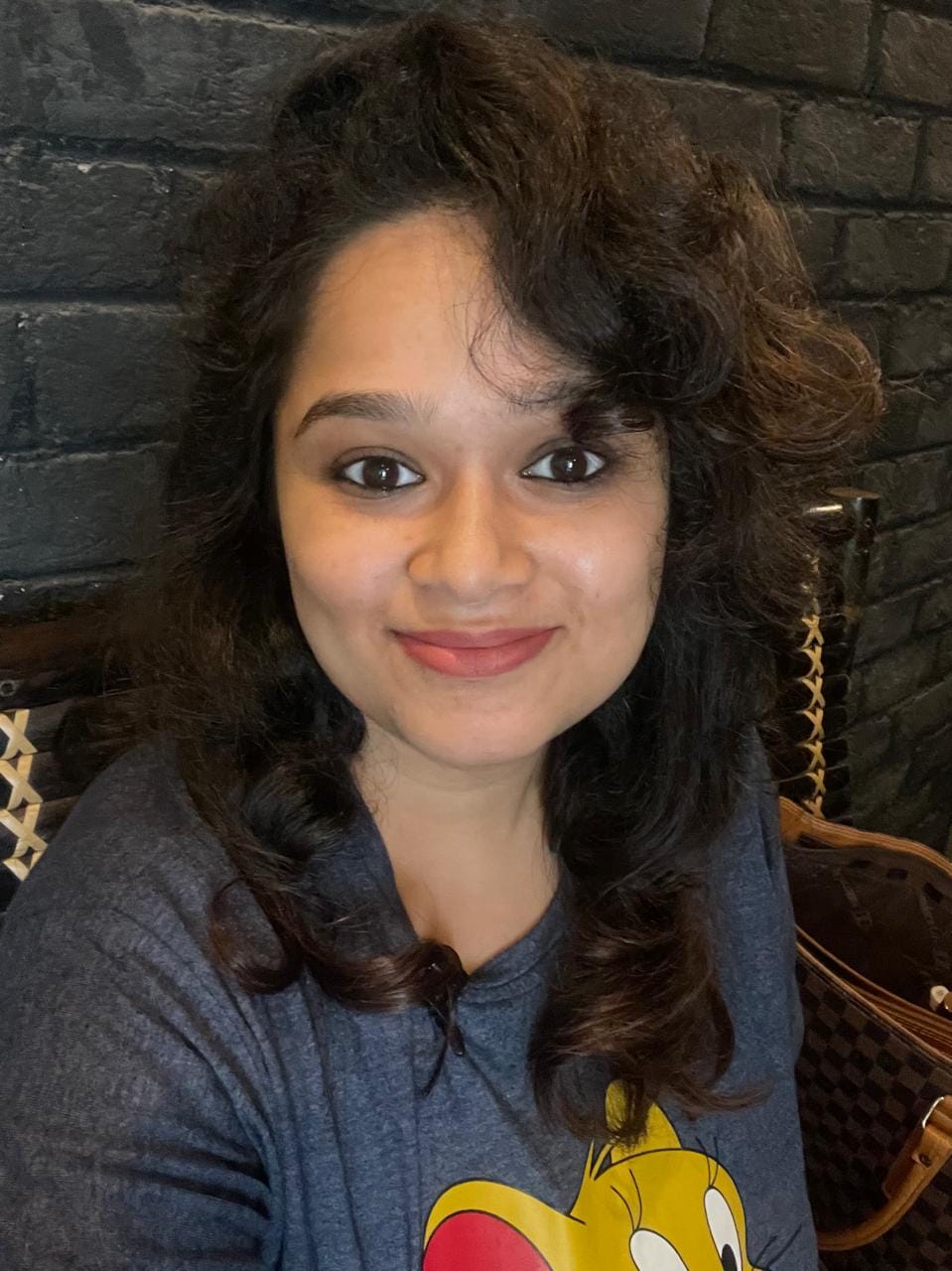
Ruchi Dhimar is a skilled content writer with 5 years of experience. She is passionate about crafting compelling narratives, specializing in writing content for different industries.

